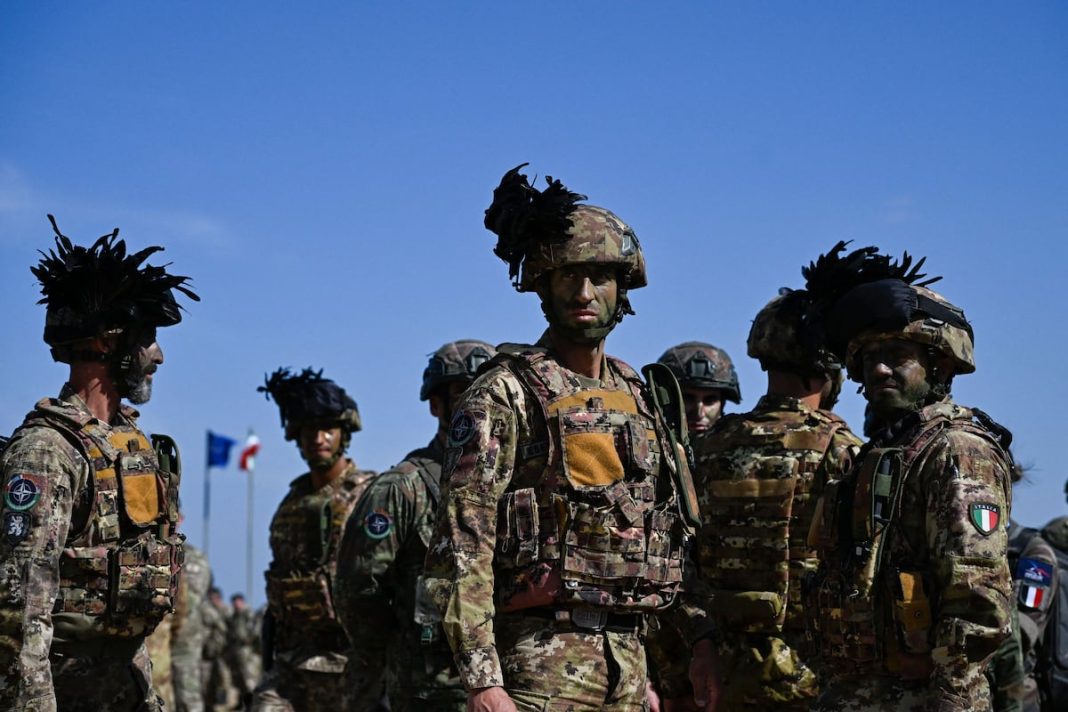Italy’s defense spending is experiencing a gradual increase, yet it remains below the NATO goal of 2% of GDP—an issue that could attract criticism from incoming U.S. President Donald Trump. With Trump’s anticipated return to the White House, Italy stands out among the declining number of NATO members failing to meet this self-imposed benchmark, which has been in place for nearly a decade.
Italy’s defense budget will amount to €29.18 billion ($30.89 billion) this year, reflecting a healthy rise from last year’s €27.75 billion, as announced by Defense Minister Guido Crosetto in the Italian Senate. Despite this increase, Italy’s defense spending constitutes only 1.54% of its GDP. While a recent defense budget document warned of a slight decrease in spending for the following year, Finance Minister Giancarlo Giorgetti later reversed this projection, now estimating a rise to 1.57% of GDP next year, and further increases to 1.58% in 2026 and 1.61% in 2027.
However, this incremental growth is unlikely to satisfy calls for increased defense investment. Giorgetti acknowledged the challenges Italians face in reaching the NATO target, labeling it “very ambitious.” Currently, only eight NATO members, including Italy, have not reached the target, with the vast majority achieving it since 2014.
During his campaign in February, Trump emphasized the need for allied nations to contribute equitably, suggesting that those who do not meet their financial commitments should prepare for the repercussions. Echoing a previous sentiment, he remarked on the conditional nature of U.S. protection for those nations not fulfilling their defense spending obligations.
Amid ongoing discussions about defense funding, NATO Secretary-General Mark Rutte indicated that higher spending would be necessary, stating, “We will have to spend more… It will be much more than the two percent.” This backdrop has led analysts to scrutinize how effectively Italy is allocating its defense budget.
In defense of Italy’s current spending, Andrea Margelletti from the Centre for International Studies highlighted significant procurement efforts, including the acquisition of over 1,000 armored fighting vehicles, new destroyers for the navy, and advanced aircraft for the air force, alongside air defense contributions to Ukraine. He underscored Minister Crosetto’s focus on enhancing “combat readiness” against a backdrop of potential conflict in Europe, suggesting a proactive approach despite budgetary limitations.
Another analyst pointed out that while Poland has surged spending beyond 4% of GDP, the effectiveness of spending is critical. He noted that Poland’s diverse tank inventory could create logistical complications, symbolizing that spending wisely is more crucial than simply spending more.
Italy’s strong commitment to supporting Ukraine, particularly under Prime Minister Giorgia Meloni’s leadership, potentially places the country at odds with some factions of the Trump administration, given the favorable relations forged by other leaders advocating for negotiations with Russia. Nonetheless, experts believe that Italy’s continued support for Ukraine should not significantly harm its relationship with the upcoming U.S. government, emphasizing that solidarity within EU and NATO frameworks remains vital.
Meloni’s government is considered stable, and her connections with key EU figures—such as Rutte and Ursula von der Leyen—are seen as beneficial in navigating transatlantic relations. Moreover, Italy’s withdrawal from its Belt and Road agreement with China adds another layer to its defense strategy, further aligning it with Western expectations.
As defense budgets and alliances shift, all eyes will be on how Italy recalibrates its spending and diplomatic strategies in response to both internal and external pressures in the coming years.





